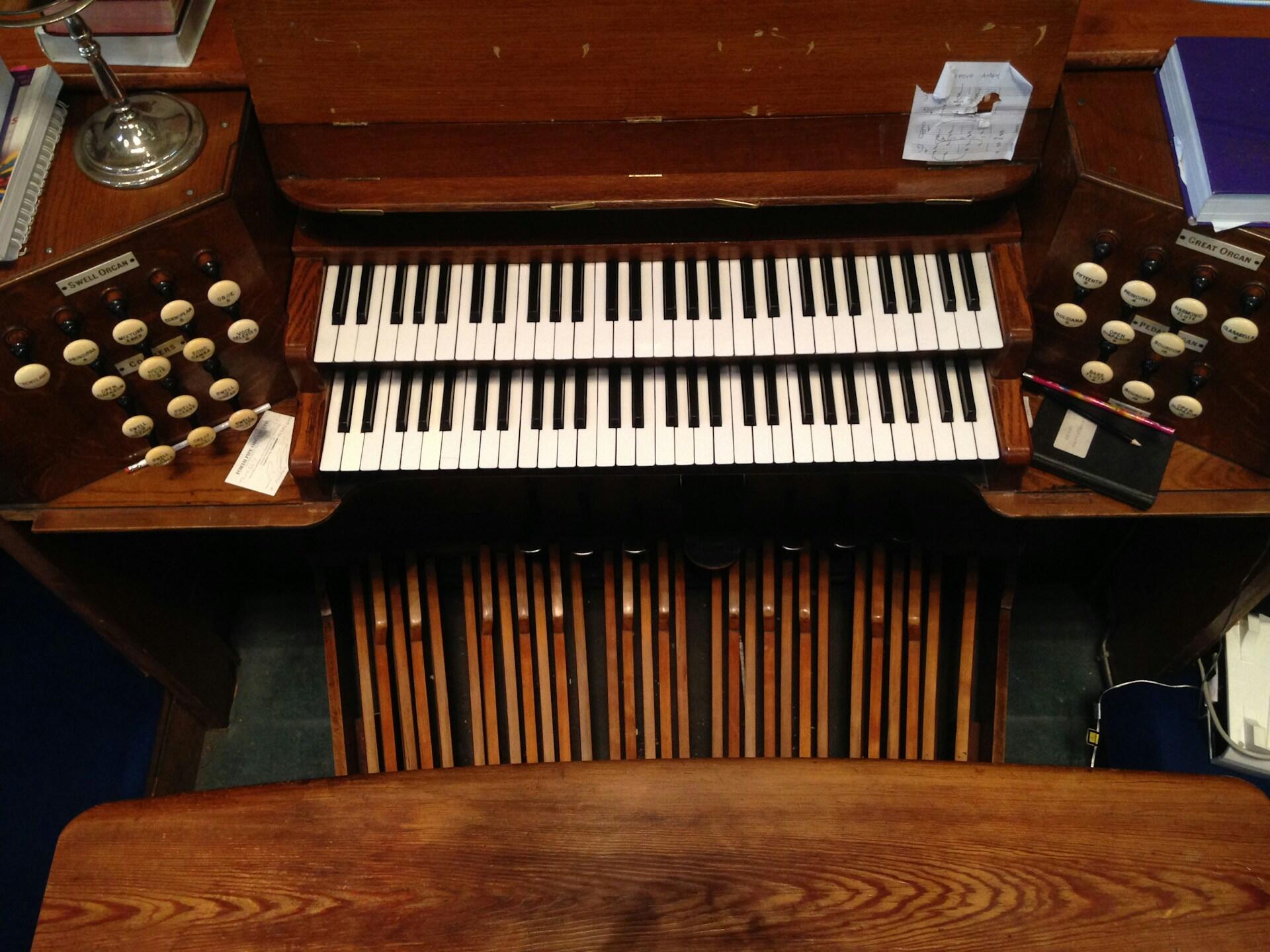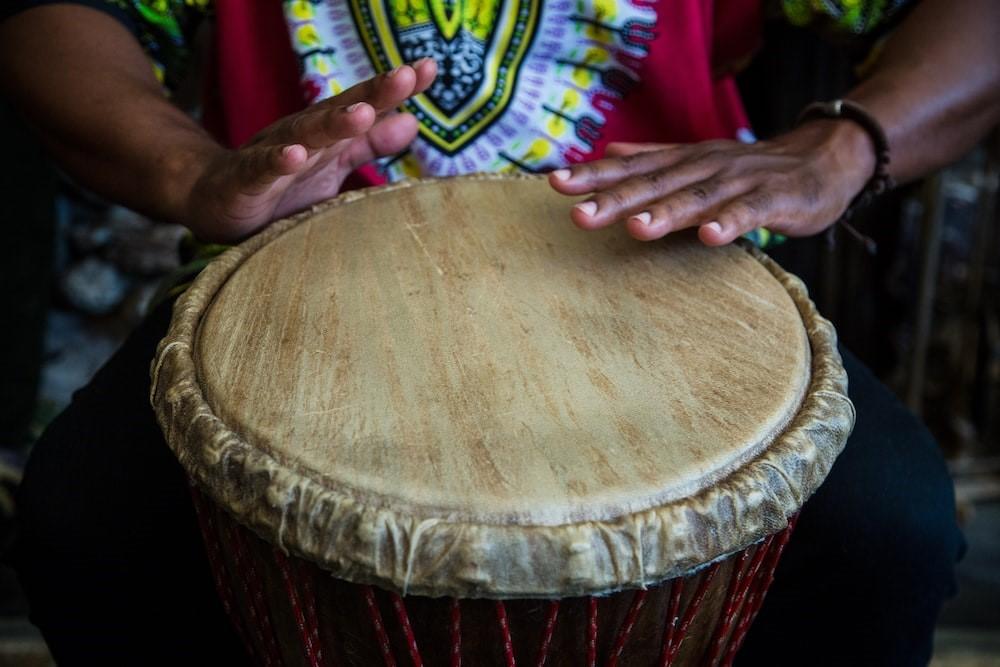Gospel music is the pure voice of hope — it lifts the spirit, strengthens faith and brings people closer to the heart of God.
Mahalia Jackson, American gospel singer
Gospel music is a type of spiritual music derived from Christian music traditions. It involves harmonies and melodies representing the hymns, as well as several expressions drawn from African music and the concept of divinity. Gospel music performances create an interactive platform between the band and the congregation, allowing listeners to enjoy the message/praise of God.
| Characteristics | Description |
|---|---|
| Lyrics | Tell stories of faith, love, and hope; often based on biblical messages. |
| Introduction | Sets the tone and introduces rhythm, tempo, and theme. |
| Fluctuation | Adds emotion by slightly changing melodies or harmonies to avoid repetition. |
| Comparison | Contrasts melodies or themes to create variety and depth. |
| Chorus/Melody | The most memorable and singable part that unites the choir and audience. |
| Pre-Chorus | Builds anticipation and leads smoothly into the main chorus. |
| Refrain | A repeated phrase or line that reinforces the song’s message. |
| Interlude | Short instrumental section that connects verses or provides a break. |
| Bridge | Links different song parts and adds new musical ideas or emotions. |
| Vamp | Repeated musical phrase that builds energy toward the song’s climax. |
| Coda | The closing section that resolves the song’s melody and message. |
| Reprise | A return to an earlier theme to heighten emotion before the end. |
| Postlude | Final instrumental passage that leaves a lasting, peaceful impression. |
Did you know the United States has more than a 100-year history of gospel music! Keep reading to learn all about the characteristics of gospel music!

Defining Gospel Music Characteristics
In the musical sense, element or form is defined as the structural design or sequence of the songs. Musical forms and composition are crucial because they allow band directors and singers to organize the music and contribute not only to its development but also to the overall harmony and melody of the song. Let's look at the elements or forms of modern gospel music!
Gospel music began over 100 years ago, around the early 1900s. It grew from African American church songs and spirituals. It became a powerful way to share faith through music.

Themes
Gospel music is generally built around themes of faith, hope, redemption, and praise. Every song is a message that uplifts the spirit and reminds the listeners of God's presence in both joy and worship. Soloists and full choir choose music and lyrics that tell a story of perseverance, love, and spiritual awakening. Gospel songs are there to help worshippers reflect, rejoice, and renew their faith with music. Gospel music also strengthens bonds within the congregation by fostering a sense of comfort and belonging as part of a spiritual celebration expressed with sincerity and emotional conviction.
It's also common for gospel music to speak to broader human experiences, not just the divine. Perserverance, injustice, and healing are common topics drawn from or inspired by scripture that reflect real-life struggles. Hardship becoming hope, both lyrically and musically, is quite common. Gosepl is an act of praise, a form of storytelling, and musical expression all in one.
Gospel lyrics often act as a form of testimony, giving voice to faith, struggle, and gratitude. They transform personal experiences into shared stories that bring comfort and unity to the congregation. Each verse is more than music; it's a declaration of hope, sung with conviction and purpose.
Lyrics
The lyrics, which can be one or many, express conceptual notions, ideas, or tales about music at the core of the music and can be performed by a soloist, a pair, a triad, or a chorus, as an orchestral musician. However, it is vital to remember that a lyric or body in modern music is similar to a paragraph in a poem or title track.
When you sing gospel, you have a feeling there is a cure for what’s wrong.
Mahalia Jackson
Learn everything you need to know with a professional tutor for singing lessons near me.
Rhythmic Elements
Rhythm and tempo are the heartbeat of gospel music. The rhythm gives each song its pulse, often driven by handclaps, drums, or steady piano chords that encourage the audience to join in. Tempos can be slow and soulful for worship songs or fast and energetic for joyful praise. The changes in speed and rhythm reflect the emotion and purpose behind the lyrics. Together, rhythm and tempo create a powerful connection between the music and the listener, filling churches and concert halls with spirit and energy.
The rhythm in gospel drives the music and participation. After all, gospel is generally a very participative genre of music. The choir and congregation are bound through the music, and syncopation and repetition help the music build naturally and communally towards its climax.
Instrumentation
The sound of gospel music comes alive through its distinct mix of instruments. Early gospel relied mainly on clapping and voices, but as the style grew, instruments like the piano, organ, drums, and guitar became central to its sound. The Hammond organ, in particular, is famous for its deep, soulful tone that gives gospel its signature warmth.

Modern gospel often adds electric bass, keyboards, and percussion to build excitement and depth.
Every instrument plays a role in supporting the singers and enhancing the emotional power of the message being shared.
Instrumentation in gospel is how many newer gospel artists are choosing to reinterpret the genre. Synthesizers, brass sections, and digital percussion can all be integrated into the music to complement the organ and piano tones. Of course, gospel still remains a very live genre of music, with instrumentalists responding dynamically to vocal improvisation. From small churches to packed concert halls, gospel instruments are there to amplify the music's emotional message and should be enjoyed live where possible.
Few sounds define gospel quite like the Hammond organ. With its deep tones, rotating speaker, and soulful vibrato, it fills churches with warmth and resonance. The organ bridges rhythm and emotion, guiding singers and audiences alike into moments of intense spiritual connection.
Performers
Gospel performers are known for their emotion, energy, and sincerity. Whether performing as soloists or in large choirs, they pour their hearts into every song, aiming to inspire and uplift their audience. Legendary figures such as Mahalia Jackson, Aretha Franklin, and Kirk Franklin helped shape gospel music, blending faith with creativity and passion. Choirs, in particular, highlight unity and strength through rich harmonies and group expression. Every performance is more than a concert—it’s a celebration of faith, hope, and community, where both singers and listeners share in the joy of the music. Gospel music has influenced many other musical genres.
Many of the world’s biggest artists started singing in gospel choirs! Legends like Aretha Franklin, Whitney Houston and Sam Cooke began their careers in church before taking their gospel-inspired voices to global fame. Their powerful singing styles still carry the heart of gospel music today.
Vocal Techniques
The vocal style of gospel music is what makes it so powerful and moving. Singers use strong vibrato, emotional phrasing, and improvisation to express deep feelings of belief and joy. Many use melisma, where one syllable stretches over several notes, to add emotion and flair. Call-and-response patterns between the lead singer and choir create a sense of conversation and shared spirit. Gospel singers focus on heartfelt delivery rather than strict precision, allowing each performance to feel raw and real. These vocal techniques give gospel its unmistakable sound and lasting emotional impact. Gospel musicians in the modern day incorporate modern musical genres like hip-hop and R&B into the various types of gospel pieces.
Introduction
A song's introduction is the segment that generally highlights the song's concept and consists of several phases or gestures. Hence, the song's primary and distinctive components, such as speed, tone, and repetitive flow, should be presented at the beginning. However, in rare cases, the vocal composition can be the intro.
Fluctuation
It is the alteration of a particular musical theme by the original expression, and it aids in reducing the irritating influence of repetition by building passion in the presence of R&D. Hence, fluctuation is represented by A to A1 in song composition, where A1 signifies the revised harmonic concept.
Comparison
The contrast of a melodic notion or the continuation of a theme gives a new spirit to an old musical concept. It is equivalent to A to B, where B is the current flowing motion or notion. As a result, based on the preceding elementary assessment, the songs can either be composed as A1 to B or A to A.
Chorus or Melody
A melody is a piece of music that a group sings together, expressing the topic and subject of the song in certain songs. Thus, a chorus or melody is essentially that element of gospel music that the listener should be able to connect with, either before or after hearing the lyrics. Besides, since the melody and reprise are the most remembered parts of the song, they should be brief, catchy, and easy to sing.

Pre-Chorus
As musical and lyrical flows differ from stanza and chorus flows, the pre-chorus is assumed as the portion between the lyric and the melody. This segment occurs before the chorus and is generally designed to give the listener a preview of the melodic element. However, a pre-chorus is not found in every song. Are you looking for adult singing lessons?
Refrain
In music, refrain refers to repetition, such as a segment that repeats itself at a particular moment across a specified, consistent time range. It is most commonly seen in stanza-written songs and poetic lyrics. The primary contrast between refrain and melody is that refrain lines are generally two or three lines long, and melodic lines are generally longer and may be inconsistent in their compositional recurrence.
Interlude
An interlude is primarily an orchestral section that appears between song setups and must be anticipatory. Interludes, like the introduction, appear anywhere after the melody of the first lyric. There can be numerous interludes in a song. However, in modern music, the interlude is usually played by a guitar or another melodic instrument.
Bridge
The bridge is an intermediary piece in music that connects two independent sections and is often found in the middle of a song. The bridge in music is recognized by a distinct recurrent mode, carefully arranged themes, variation, and expressive harmonies. They are, however, not found in every type of music.
Vamp
It is a short section that is repeated several times to build intensity toward the climax of the song. The repetition creates anticipation and excitement, often leading to a powerful emotional release. In gospel music, the vamp is where singers and musicians pour their full energy into the performance, lifting both the choir and audience to a spiritual high point. Discover the perfect tutor for singing lessons near me when you search on Superprof!
Coda
Coda is an Italian word meaning “tail,” and it refers to the final section of a song where it reaches its resolution. It often brings the melody, harmony, and rhythm together for a strong, memorable finish. In gospel music, the coda may include a final vocal flourish, a dramatic chord, or a fade that leaves listeners in reflection. It gives closure to the performance while reinforcing the message of faith and praise that runs through the song.
Reprise
Reprise refers to returning to the song to increase the intensity and musical enjoyment at the song's end. However, returning to the music does not imply that it should be repeated. Since a reprise emphasizes a point, the melody should be established near the conclusion so that the lead vocals, guitars, and chorus members are not overworked.
Early gospel choirs created their powerful harmonies by blending voices in spontaneous and joyful ways. This mix of rhythm, emotion and unity gave gospel music its warm, rich sound and helped make it one of the most distinctive musical styles in the world!
Postlude
The postlude, like the interlude, is a short instrumental section that appears at the end of a song. It often features instruments such as the guitar, piano, or organ, allowing the music to finish naturally after the vocals. In gospel music, the postlude carries a joyful or reflective tone that leaves listeners with a strong emotional impression. It brings the song to a smooth and meaningful close, often ending with a sense of peace or celebration.
Discover the perfect tutor for singing lessons near me on Superprof today!

Want to Learn More About Gospel Music with Superprof
Gospel music is a musical genre comprising songs centered on the Christian religion and performed in various styles, including hop, funk, African beat, reggae, country and rock. What are the main Gospel music characteristics? Gospel music is usually recognized by anthem rhythms, melodies, and various emotions rooted in African music and culture. Moreover, gospel music's eleven diverse musical forms are divided into four broad musical styles: classic, southern, motivational, and modern. If you want to learn more about gospel music, Superprof is a fantastic option to explore. Our highly experienced instructors can help you quickly understand what is Gospel music, along with all its forms, genres and aspects, and how it differs from other classes of music.
















